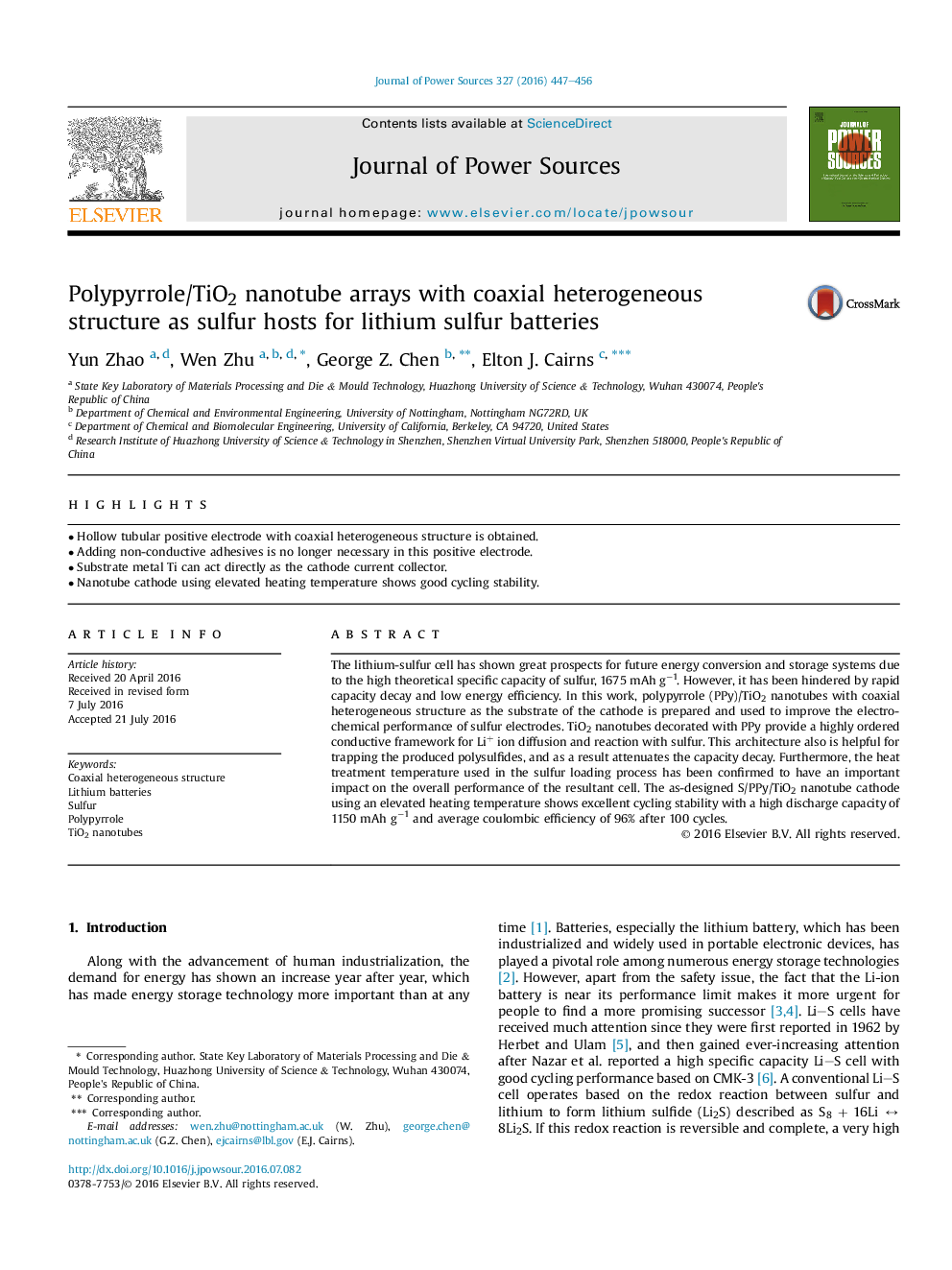| Article ID | Journal | Published Year | Pages | File Type |
|---|---|---|---|---|
| 7727125 | Journal of Power Sources | 2016 | 10 Pages |
Abstract
The lithium-sulfur cell has shown great prospects for future energy conversion and storage systems due to the high theoretical specific capacity of sulfur, 1675Â mAh gâ1. However, it has been hindered by rapid capacity decay and low energy efficiency. In this work, polypyrrole (PPy)/TiO2 nanotubes with coaxial heterogeneous structure as the substrate of the cathode is prepared and used to improve the electrochemical performance of sulfur electrodes. TiO2 nanotubes decorated with PPy provide a highly ordered conductive framework for Li+ ion diffusion and reaction with sulfur. This architecture also is helpful for trapping the produced polysulfides, and as a result attenuates the capacity decay. Furthermore, the heat treatment temperature used in the sulfur loading process has been confirmed to have an important impact on the overall performance of the resultant cell. The as-designed S/PPy/TiO2 nanotube cathode using an elevated heating temperature shows excellent cycling stability with a high discharge capacity of 1150Â mAh gâ1 and average coulombic efficiency of 96% after 100 cycles.
Related Topics
Physical Sciences and Engineering
Chemistry
Electrochemistry
Authors
Yun Zhao, Wen Zhu, George Z. Chen, Elton J. Cairns,
